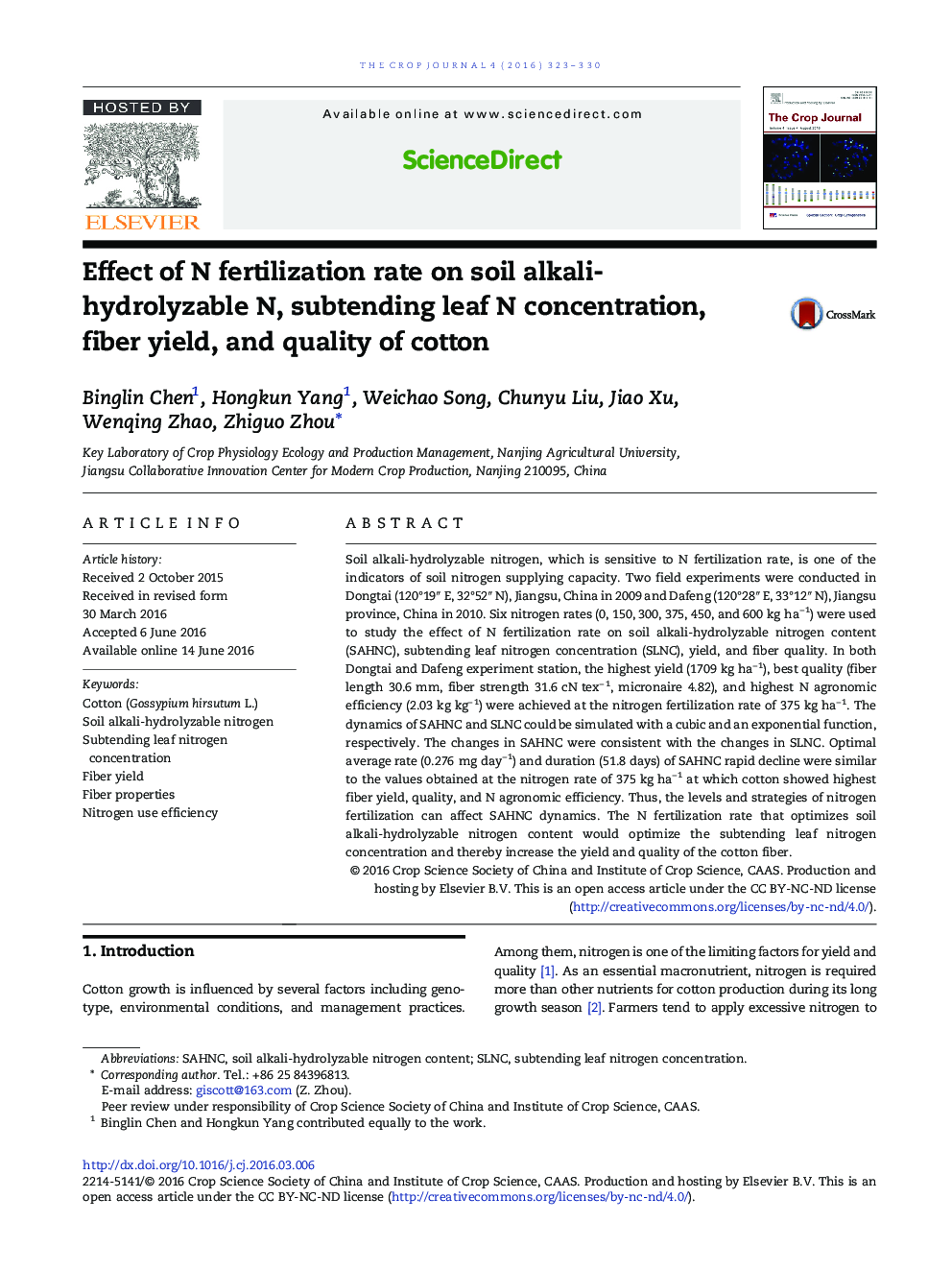| Article ID | Journal | Published Year | Pages | File Type |
|---|---|---|---|---|
| 2079407 | The Crop Journal | 2016 | 8 Pages |
Soil alkali-hydrolyzable nitrogen, which is sensitive to N fertilization rate, is one of the indicators of soil nitrogen supplying capacity. Two field experiments were conducted in Dongtai (120°19″ E, 32°52″ N), Jiangsu, China in 2009 and Dafeng (120°28″ E, 33°12″ N), Jiangsu province, China in 2010. Six nitrogen rates (0, 150, 300, 375, 450, and 600 kg ha− 1) were used to study the effect of N fertilization rate on soil alkali-hydrolyzable nitrogen content (SAHNC), subtending leaf nitrogen concentration (SLNC), yield, and fiber quality. In both Dongtai and Dafeng experiment station, the highest yield (1709 kg ha− 1), best quality (fiber length 30.6 mm, fiber strength 31.6 cN tex− 1, micronaire 4.82), and highest N agronomic efficiency (2.03 kg kg− 1) were achieved at the nitrogen fertilization rate of 375 kg ha− 1. The dynamics of SAHNC and SLNC could be simulated with a cubic and an exponential function, respectively. The changes in SAHNC were consistent with the changes in SLNC. Optimal average rate (0.276 mg day− 1) and duration (51.8 days) of SAHNC rapid decline were similar to the values obtained at the nitrogen rate of 375 kg ha− 1 at which cotton showed highest fiber yield, quality, and N agronomic efficiency. Thus, the levels and strategies of nitrogen fertilization can affect SAHNC dynamics. The N fertilization rate that optimizes soil alkali-hydrolyzable nitrogen content would optimize the subtending leaf nitrogen concentration and thereby increase the yield and quality of the cotton fiber.
